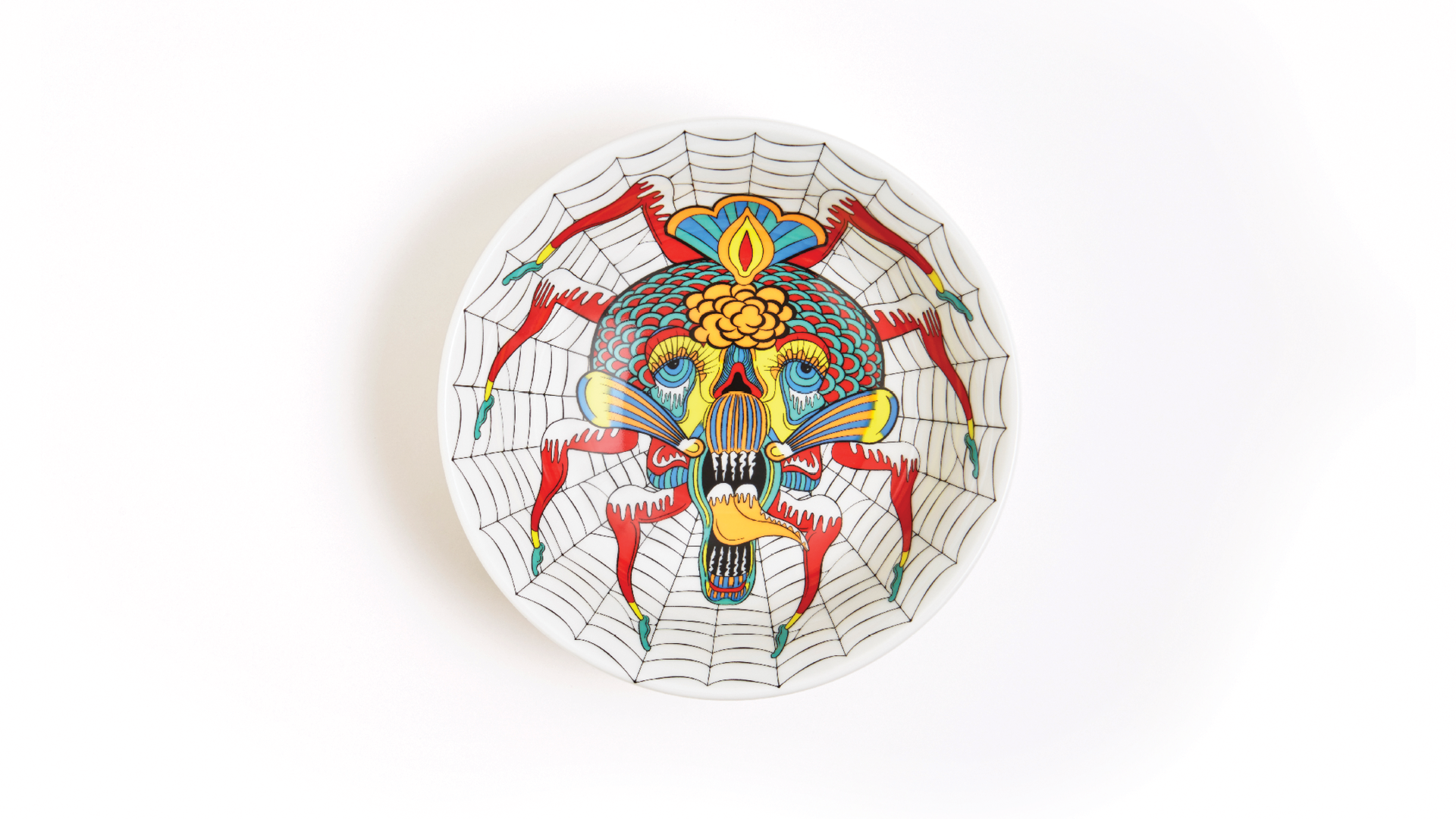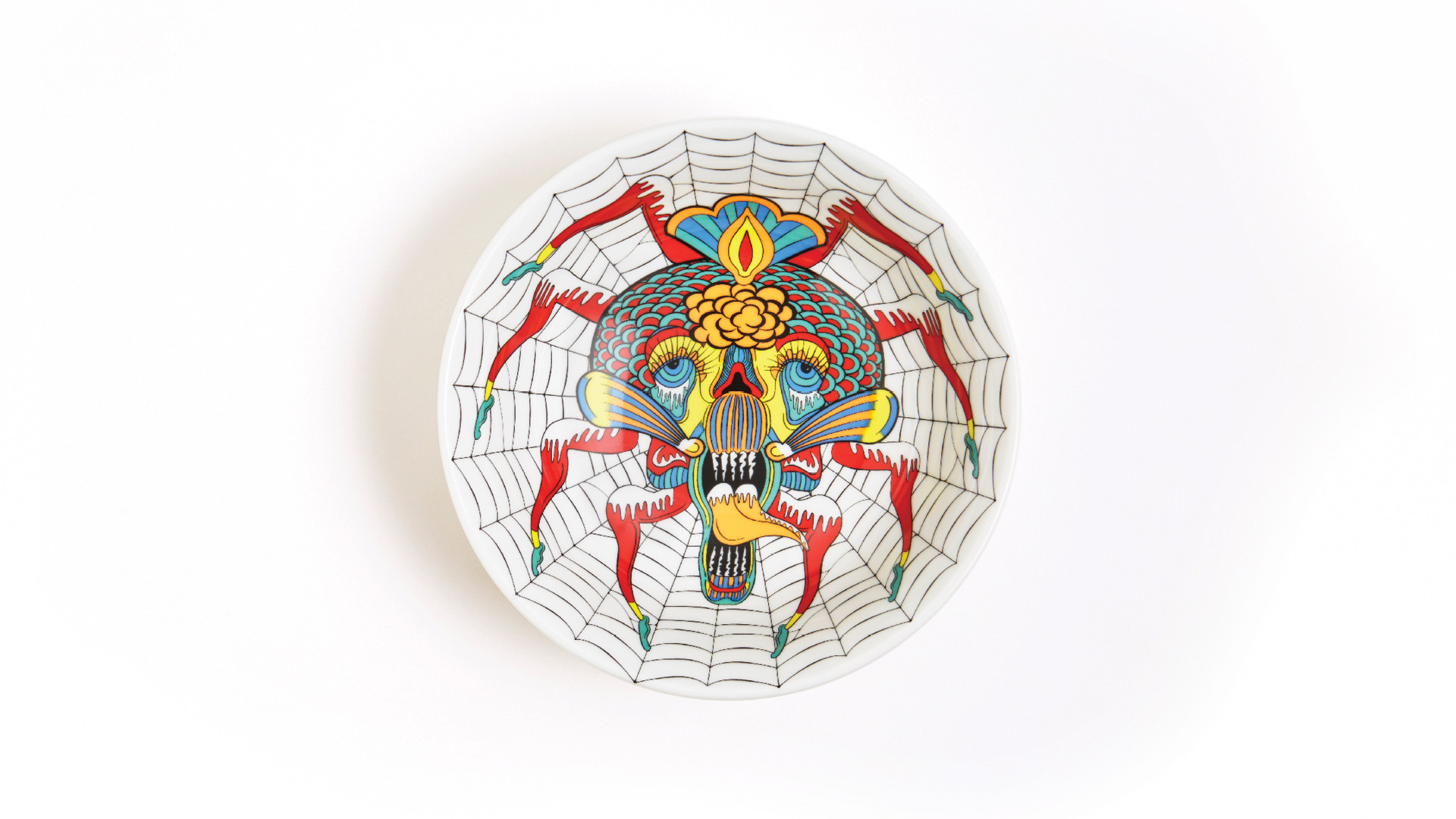- Date
18.10.2022―05.02.2023
- Tuesday to Friday
from 10 am to 6 pm
- Saturdays
from 9 am to 7 pm
- Sundays and holidays
from 9 am to 6 pm
- Cost
free admission
- Early booking (optional)
- The exhibition has accessibility features

Visit the exhibition with the virtual tour 360º
The Art of RAMEN Donburi
Served in a single bowl, ramen is a dish that combines five elements: Noodles, dashi, tarê, toppings, and fat, and it can be prepared in countless recipes with different flavors and styles.
Free admission in JHSP
Between October 18, 2022 and February 5, 2023, Japan House São Paulo presents an unprecedented exhibition in Brazil dedicated to ramen bowls, the ramen donburi, and seeks to understand what makes this dish such a phenomenon that has spread throughout Japan and the world. Admission to the exhibition, which has already been featured by Japan House Los Angeles in 2022, is free.
Ramen bowl, or ramen donburi
On the ground floor of the institution, 'The Art of RAMEN Donburi' showcases the important role ceramic bowls play in the preparation and composition of the various ramen recipes. Most ramen donburi have a standardized size, raw material, and shape, and approximately 90% of them are made in the region of Tono, southwest of Mino, in the Gifu prefecture, in Japan. The exhibition presents a Japanese approach to design, which values the beauty of everyday objects and elevates donburi, a utilitarian piece, to the category of art.
Organized by the designer Taku Satoh, and by the writer and editor Mari Hashimoto, together with the Ceramic Valley Association of Mino, the exhibition is divided into sections that present the ramen culture and anatomy; the ramen donburi, and the Mino ceramics production.
It starts with the history and culture of ramen, showing the rich diversity of ingredients that a single bowl can bring together. Also showcased here will be a giant sample of ramen created by Iwasaki, a company known for producing plastic food samples, which are extremely popular in Japan.
Donburi or true works of art?
Donburi - the main attraction of the exhibition - is revealed in the second part, where visitors will be able to see 30 bowls and their spoons (renge) transformed into true works of art by the hands of 30 creators, such as visual artists, designers, and architects. Each brings references, experiences, and curious stories about their relationship with this famous dish
The limelight is on the work of the pioneering pop multi-artist, graphic designer, and illustrator Keiichi Tanaami, with a peculiar donburi decorated with a spider. The graphic designer and exhibition curator Taku Satoh, in turn, pays homage to traditional graphism, such as the “thunder pattern,” the dragon, and the phoenix. The psychedelic style of the renowned illustrator Tadanori Yokoo can also be seen in a donburi decorated with happy skulls - an allusion to the tonkotsu ramen broth, which is made with pork bones.
In addition to them, also present at the exhibition are creations of Akira Minagawa; Alan Chan; Atsuki Kikuchi; Ayame Suzuki; Gugi Akiyama; Hikaru Ichijo; Hisashi Tenmyouya; lssay Kitagawa; Izumi Shiokawa; Jin Katagiri; Jonathan Barnbrook; Junya lshigami; Katsumi Asaba; Kazufumi Nagai; Kazumasa Nagai; Kazunari Hattori; Kenjiro Sano; Koichi Sato; Masayoshi Nakajo; Misa Awatsuji; Shin Matsunaga; Shin Sobue; Tabaimo; Yasumichi Morita; Yoshiharu Doi; Yuki Senda; Yuri Uenishi.
Mino Ceramic Valley
In the last section, visitors are introduced to the Mino Ceramic Valley, the main ceramic region in Japan, responsible for producing almost 90% of the country's porcelain ramen bowls, many of which have also found their way into ramen shops around the world.
On display will be maps, photographs, and videos about the geography and history of this region, which for over 500 years has produced ceramic pieces that combine beauty and functionality. Also showcased here are ten more donburi produced by the skilled potters of Mino and which reflect the diversity of techniques and finishes produced in the ceramic kilns of the region. Here, visitors are invited to discover the variety of the production of Mino, which also manufactures ceramic tiling used in construction.

Parallel activities especially for the exhibition
To delve even further into this universe, Japan House São Paulo created several parallel activities especially for the exhibition, such as lectures and workshops for the whole family. The highlights are two gastronomic initiatives: Ramen Matsuri, on October 26, and JHSP Ramen Nights, from 22 November, which will feature the participation of some of the main representatives of ramen in the capital of São Paulo: Hidden by 2nd Floor, Hirá Ramen Izakaya, Jojo Ramen, Lamen Kazu, Tamashii Ramen, Tonkotsu Barikote Ramen Maru, and the restaurant Aizomê, by chef Telma Shiraishi, which welcomes all participants on the second floor of the Japanese institution.
The audience will be able to access other exclusive content related to the theme of the exhibition via QRcode on JHSP's web app. There are exclusive interviews with seven chefs specializing in ramen who work in the capital of São Paulo, and tips on where to find ramen in Japanese pop culture, such as manga, anime, and cinema.
Accessible JHSP program
Within the Accessible JHSP program, “The Art of Ramen Donburi” also features other resources, such as audio descriptions, sign language, and a bench with tactile elements, all designed to make visiting the exhibition more inclusive.
![]()
--
Service:
'The Art of RAMEN Donburi' Exhibition
#RamenDonburiNaJHSP
Period: October 18, 2022 to February 5, 2023
Cost: Free admission
The exhibition has accessibility resources (Sign language, audio descriptions, tactile elements).
Early booking (optional): https://agendamento.japanhousesp.com.br
Japan House São Paulo | ground floor
Location: Avenida Paulista, 52 – Bela Vista, São Paulo
Opening hours:
Tuesday to Friday, from 10 am to 6 pm
Saturdays, from 9 am to 7 pm
Sundays and holidays, from 9 am to 6 pm.
Japan House São Paulo remains closed on Mondays, without exception, including on holidays.




